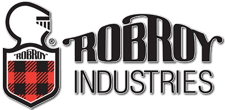
Robroy Enclosures is a subsidiary of Robroy Industries specializing in non-metallic industrial enclosures under the AttaBox and Stahlin brand names. They are a primary source producer and manufacturer of all their enclosures and enclosure components. Currently they have 12 product lines, comprising over 800-part numbers and over 30 configurations. Enclosures are fabricated from fiberglass, polycarbonate, and PVC in a variety of shapes and sizes and many carry NEMA ratings and/or UL certification.
Robroy’s enclosures have a wide range of applications in several industries including the solar, electrical, telecommunications, HVAC, instrumentation, oil/gas, and construction.
Robroy Enclosures had a change in executive leadership. With a strong emphasis on efficiency and background experience in manufacturing, new President Craig Mitchell hoped to gain insight into their sales operations. Unfortunately, due to restructuring of the sales department and the addition of a new inside sales team, the full picture lacked clarity and detail. And to further complicate matters, much of the internal knowledge and processes experienced sales reps had gathered was not documented, so if a rep left the company, that knowledge often left with them.
Robroy’s sales model of distributors added another layer of complexity. This “extended sales team” also needed to stay engaged with the internal teams and share information they gather when working with customers. They might even be able to help profile specific types of prospects or emerging regional and local markets.
They had deployed a CRM (customer relationship management database) within the last three years; however, they were still unable to track opportunities through their pipeline or pinpoint sources of inefficiency. Despite the capabilities of the CRM, they were unable to create the reports they needed to check KPIs and unable to examine notes and background about opportunities in detail. As many companies experience, the CRM was powerful but underutilized, and therefore undervalued.
Because this is such a large and dynamic sales environment, there is always potential for obstacles. As an outside advisor, Acadia provided an objective assessment of the situation, uncovering inconsistencies in procedures/steps among reps, follow up with prospects, and entry of sales notes in the CRM. Not only were reps missing chances to advance the sales process, there were also plenty of missed opportunities to capture data about the sales cycle, prospect needs, and general sales operations, which lead to inaccurate reports and metrics.
Once the obstacles were identified, Acadia created tools to help reps and management stay informed, connected, and on track. For sales reps, a series of workflows and flowcharts were developed to ensure all reps guide prospects through the same stages in the same order each time, follow up routinely, and record notes in a similar manner. The key to success was in creating documented procedures such as following up with prospects who request a sample enclosure within two weeks, writing up detailed notes on each sales call and entering them in the CRM, and making sure reps in the field know how to access the CRM from mobile device.
To build a sense of community and common goals within the sales team and with management, a daily huddle meeting was implemented. Now part of the routine, it’s a way for management to get caught up on sales activity and issues from the previous day, and to make a plan for the days ahead. It also keeps critical sales opportunities top of mind for a little extra insurance against them slipping through the cracks. And because procedures are documented, team members can jump in to help as needed without missing steps.
With more and higher quality information going into the CRM, Acadia worked with Robroy to set up customized reports and dashboards to visualize the data leadership wants and needs to see. Real time updates on dashboards also make it easier to take proactive steps to advance sales and address potential issues – not merely to react. The ability to see sales data on product lines, regions, or stages in the sales cycle instantly shows places where teams need to help each other and when it’s time to correct course.
Within three months leadership saw the impact: CRM data on the conversion rate from leads to sales proved the new procedures were driving sales. Moving forward, the sales team plans to continue the transition from spreadsheets to more robust and consistent CRM use, which means metrics will be even more accurate and useful over time.
“No one likes to see and hear where they’re falling short, but we knew we had to own our sales process and commit to changes. Acadia provided unbiased guidance to help our entire sales team truly understand what we needed to do, and why, to stay efficient. The tools Acadia gave us create visibility into our sales operations and processes, which had been missing in the past. Now with reports and metrics based on live data from our CRM we can see the facts and make solid decisions. “
- Craig Mitchell, President, Robroy Enclosures
© 2024 Acadia